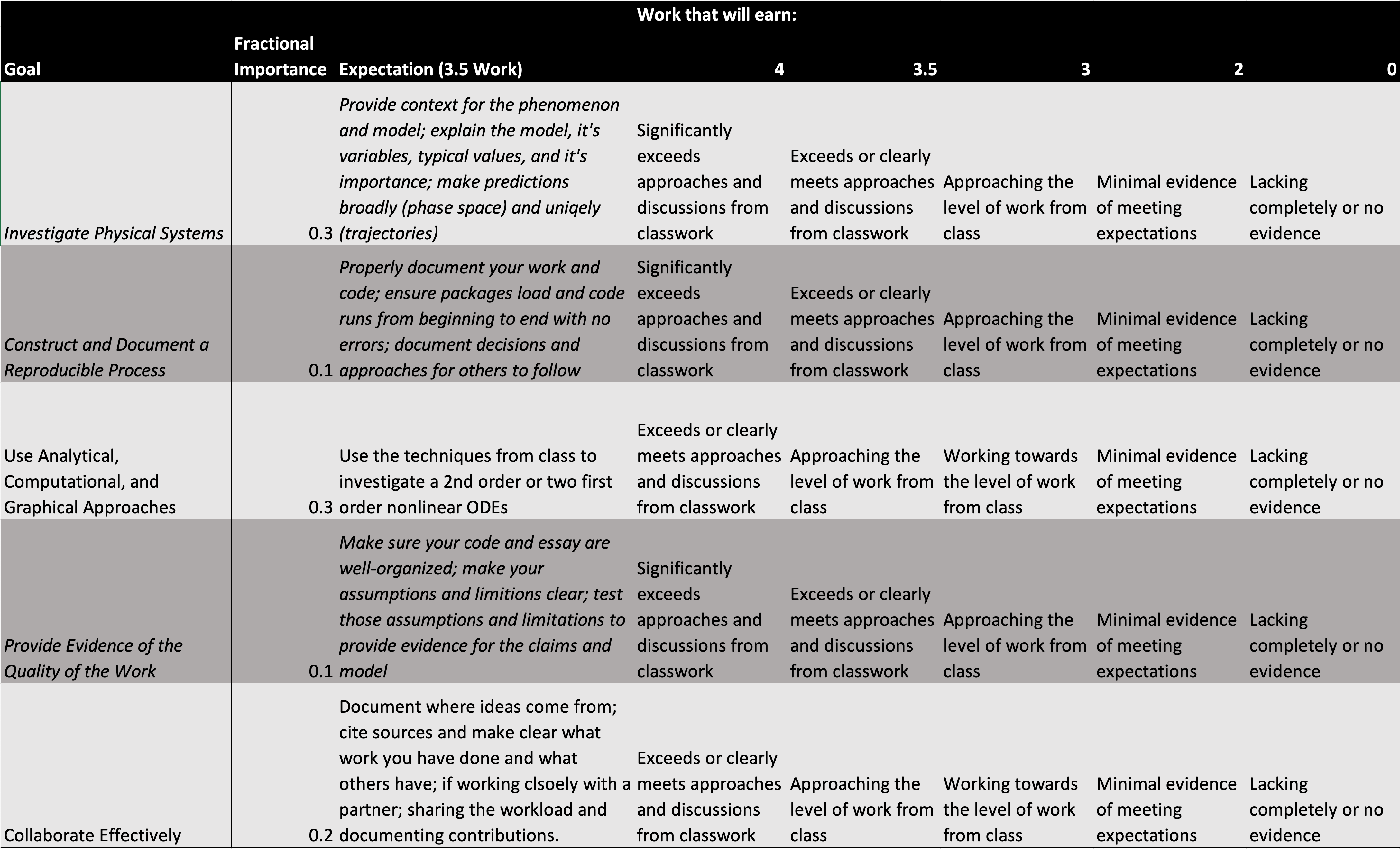Project 4
Contents
Project 4#
Project 4 will emphasize our analysis using the Fourier Series and the Fast Fourier Transform. You will work with simulated or real data (your choice) to conduct an analysis using the FFT. We aim for you not only to conduct the FFT, but to do so by explaining what you are investigating and finding as a result of the analysis. You can try to make some physics conclusions about the analysis or you can analyze the FFT itself and explain what it is doing and why. Of course, if you have a cool idea, let me know and I’m sure it will be ok.
What do you need to do?#
Develop a computational essay that investigates the physics of your system of interest. You should be able t:
Read in or create data sets for analysis
Perform appropriate FFT analysis on those data
Explain your results in a coherent story
One big piece of feedback for everyone is that these essays are really getting good. The best ones include a structure that indicates what you are doing and why you are doing it. If you haven’t tried to organize your work and you are getting a bit lower scores, try to spend a bit more time organizing things. Likely your scores will go up!
We have illustrated most of that work in class. So how might we go further? If you want a fun challenge or you are working in a group that wants something different try doing 2D FFT, we do this for image analysis! Drop some Machine Learning on the resulting FFT and see if it can pick out peaks in your data. You do not have to do either for a strong project, but these are real things we do in this department!
Resources#
Potential Projects Ideas#
Simulated data of signals with different forms of noise
Real data from your research group (or ask Danny - posting some soon)
Lots of 1D time series data on the web (e.g., the MLR)
Challenging and Group Worthy - 2D FFTs of images (e.g., this is a very tool common in condensed matter and astrophysics)
Rubric#
Right click and open in new tab for large version

